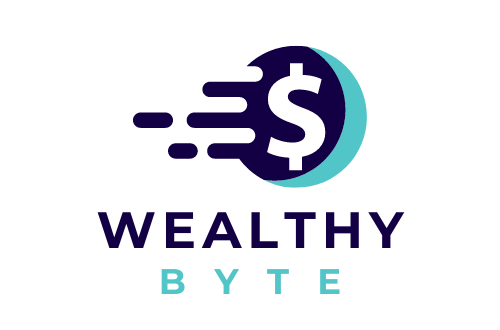
Paid social media advertising requires a clear understanding of specific, measurable objectives such as heightening brand awareness, augmenting sales, or driving targeted traffic to a website. Each platform presents distinct advantages and tools tailored for these goals—Instagram thrives on visual engagement while LinkedIn capitalizes on professional networking. A well-executed strategy not only boosts brand visibility but also encourages interaction, offering brands a direct line to engage with potential customers in meaningful ways.
For those looking to enhance the effectiveness of their campaigns, enlisting the expertise of a creative team, such as that offered by Designity, can prove invaluable. Their specialized services in paid social media advertising help refine ad strategies to ensure that each campaign is impactful and resonates deeply with its intended audience. Utilizing such professional services can transform a standard ad campaign into a pivotal growth tool for any brand.
Choosing the Right Social Media Platforms
Selecting the appropriate platforms is crucial for maximizing the impact of your paid advertising efforts. Not all platforms serve every business equally, as each harbors a unique user base and fosters different forms of content interaction. For example, visual-centric brands may excel on Instagram or Pinterest, whereas businesses in the B2B sector might find LinkedIn more beneficial. Identifying where your target audience is most active lays the groundwork for any successful advertising campaign.
Thorough analysis of demographic data assists in pinpointing the right platforms. For instance, younger demographics might be more prevalent on TikTok and Instagram, whereas older groups could dominate Facebook audiences. Additionally, the nature of the product or service can influence platform choice; for example, gadgets might resonate well on tech-savvy platforms like Reddit or Twitter.
The selection process involves more than just demographics; understanding the behavioral patterns and preferred content types on each platform is key. This understanding allows marketers to craft content that fits organically into users’ feeds while still standing out to capture their attention and provoke interaction. Thus, the platform’s environment dictates the strategic approach to content style and presentation, optimizing engagement and effectiveness.
Crafting Effective Ad Content
Creating compelling ad content is central to the success of paid social media campaigns. The content must not only capture attention but also engage and persuade the audience to interact with the brand. This requires a delicate balance of creativity and strategic planning, ensuring that the content aligns well with both the platform’s style and the audience’s expectations. High-quality visuals, engaging videos, and creative graphics play a crucial role in making ads noticeable and attractive.
The integration of consistent branding elements such as logos and color schemes is essential for enhancing brand recognition across various platforms. Such visual consistency helps to forge a strong brand identity that audiences can easily recognize and relate to, irrespective of the social media platform they are using.
Furthermore, the textual content of an ad, especially its copywriting, needs to be crafted meticulously. It should be concise yet powerful, designed to resonate with the audience while fitting within the platform’s specific limitations, such as character counts. A clear and compelling call-to-action (CTA) should be a staple of any ad, guiding users towards the next steps, whether that involves visiting a website, registering for a newsletter, or making a purchase. Employing A/B testing to trial different versions of ads can help refine both visuals and copy to ascertain the most effective approach for engaging the target audience.
Targeting and Segmentation Strategies
Advanced targeting and segmentation are what set paid social media apart from traditional advertising channels. These strategies allow advertisers to pinpoint specific user segments based on a variety of criteria including demographics, interests, and behaviors, which ensures that marketing efforts are not wasted on uninterested parties. This kind of precision targeting helps in directing content to those individuals who are most likely to be interested in the products or services being offered, thereby increasing the likelihood of engagement and conversion.
Geographic targeting is particularly useful for businesses that operate in defined areas or have physical locations. This type of targeting ensures that advertisements are only shown to users in specific locations, which can significantly increase the relevance and effectiveness of the ads. Demographic and interest-based targeting further refines this approach by allowing advertisers to reach users based on specific age groups, genders, or particular interests that align with the brand’s offerings.
Behavioral targeting enhances this process by focusing on users who have taken certain actions that indicate interest, such as visiting a website or engaging with previous content. This strategy is highly effective in increasing conversion rates as ittargets individuals who have already shown an inclination towards similar products or services. By utilizing a combination of these targeting methods, marketers can create highly optimized campaigns that not only reach the most receptive audiences but also deliver personalized messages that are more likely to drive meaningful engagement and conversions.
Budgeting and Cost Management in Paid Social Media
Efficient budget management is critical in maximizing the ROI of paid social media campaigns. Understanding the various billing options available—such as cost-per-click (CPC) and cost-per-impression (CPM)—allows marketers to strategically allocate funds based on campaign goals and expected outcomes. CPC is generally preferred when the objective is to drive traffic to a website, whereas CPM might be better suited for campaigns aiming to increase brand awareness.
Developing a budget involves not only setting a limit on how much to spend but also optimizing spend to achieve the best possible results. This requires continuous monitoring and adjustment of campaigns based on performance data. Utilizing tools provided by social media platforms for tracking ad performance, such as impressions, clicks, and conversions, helps in making informed decisions that can enhance the efficiency of money spent.
Additionally, leveraging automated bid strategies offered by many platforms can help in managing ad spend more effectively. These strategies use algorithms to adjust bids in real-time, aiming to get the best results at the lowest possible cost. However, it is crucial to regularly review these automated decisions to ensure they align with overall marketing goals and adjust them manually when necessary to maintain control over the campaign’s financial aspects.
Leveraging Analytics for Campaign Improvement
Data analytics plays a pivotal role in the continual improvement of paid social media campaigns. By analyzing the wealth of data available from social media advertising campaigns, marketers can gain insights into what strategies are working and which ones are not. This analysis covers various aspects of the campaign, such as which ads are receiving the most engagement, the demographics of the engaged audience, and the conversion rates for different ads.
These insights allow for the fine-tuning of campaigns in real-time. For example, if certain demographics are responding better to specific types of content, additional resources can be directed to target that segment more heavily. Conversely, underperforming ads can be adjusted or discontinued to allocate budget more effectively towards those that generate better results.
The use of sophisticated analytics tools can also predict future trends and consumer behaviors by examining historical data. This predictive capability enables marketers to anticipate market shifts and adapt their strategies accordingly, thus maintaining a competitive edge in the rapidly changing landscape of social media.
Creating a Cohesive Multi-Platform Strategy
Evaluating Long-Term Impact and ROI
The ultimate goal of any marketing campaign is to achieve a positive return on investment (ROI), and paid social media campaigns are no exception. Evaluating the long-term impact of these campaigns on brand visibility and sales is essential for justifying the investment in social media advertising. This involves not only measuring immediate outcomes, such as clicks and conversions but also understanding how these efforts contribute to broader brand-building objectives over time.
Long-term metrics such as brand recall, customer loyalty, and overall market share increase are important indicators of the success of paid social media efforts. Regularly reviewing these metrics helps businesses understand how their social media strategies align with overall business goals and what adjustments may be necessary to optimize long-term outcomes.
Furthermore, continual testing and learning from each campaign can lead to more refined strategies and improved ROI over time. By systematically analyzing the successes and failures of each campaign, businesses can build a more effective social media marketing strategy that not only meets immediate sales goals but also contributes to sustained brand growth and market presence.
By embracing a comprehensive approach to paid social media advertising, businesses can not only enhance their brand visibility but also forge deeper connections with their customers, leading to sustained success in the competitive digital marketplace.















